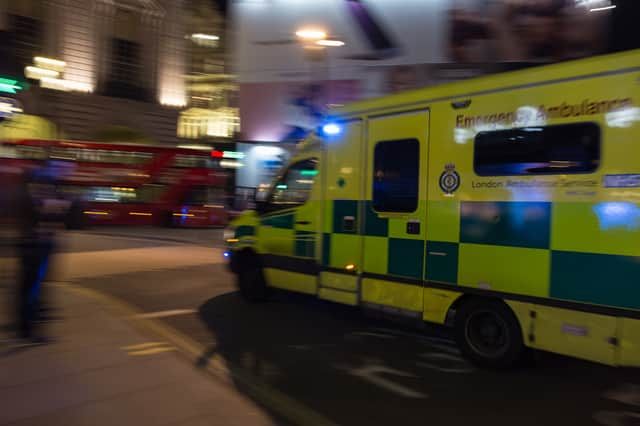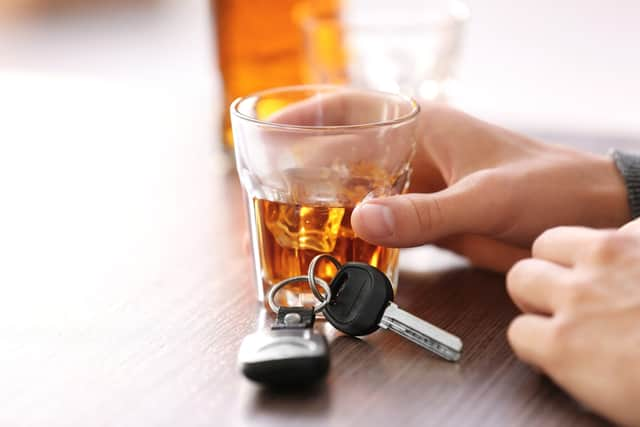Drink-drive deaths fall but fail to keep pace with lockdown drop in accidents


The number of people killed in drink-drive-related accidents fell slightly in 2020, according to the latest official figures.
However, drink-drive deaths accounted for a larger proportion of all road fatalities as lockdown affected the number of crashes and casualties.
Advertisement
Hide AdAdvertisement
Hide AdProvisional figures from the Department for Transport show that in 2020 an estimated 220 people were killed in incidents where at least one driver was over the drink-drive limit.
That is down from 230 in 2019 and is the lowest since 2015 but the impact of lockdown on traffic and overall accident rates means that drink-drive deaths were a higher percentage of the total than in the previous year.


While drink-drive deaths were down 4%, overall road fatalities were down 17% as traffic levels were significantly reduced for large parts of the year, and drink-drive fatalities represented more than 15% of all road accidents, up from 13% in 2019.
The latest figures have led to calls for a rethink of the drink-drive limit as well as an increase in roadside breath testing.
Advertisement
Hide AdAdvertisement
Hide AdOverall, accidents involving at least one drink-driver, fell by 14% to 4,620 in 2020, the lowest number of drink-drive accidents recorded, and the total number of killed or seriously injured also reached a new low, dropping by 22% to 1,500 from 2019.
Recording the provisional figures gathered from police, coroners and procurators fiscal, the DfT report noted: “It is important to note that the number of reported drink-drive accidents and casualties involved in them is likely to have been impacted by the COVID-19 pandemic in 2020 and the national restrictions implemented from March 2020 onwards leading to a reduction in traffic and accidents. The falls in drink-drive accidents between 2019 and 2020 are broadly in line with the reduction in overall road accidents over the same period.”
However, road safety charity Brake said the figures showed a need for a “change in culture” around drink-driving.
Jason Wakeford, head of campaigns at Brake, said: “Thousands of people are needlessly killed and injured at the hands of drink-drivers every year.
Advertisement
Hide AdAdvertisement
Hide Ad“A recent Brake analysis shows that, between 2012 and 2019, there were a staggering 46,860 drink-driving-related crashes, causing 1,860 deaths and 13,340 serious injuries.
“We need to change the culture around drink-driving, starting with more awareness that any amount can be deadly.
“While measures such as effective ongoing police enforcement and public information campaigns, including THINK!, are helping to reduce deaths and injuries, Government should follow Scotland’s lead and reduce the legal limit. Such a move would make it clear to drivers that no amount of alcohol is safe when behind the wheel.”
Hunter Abbott, a member of Parliamentary Advisory Council for Transport Safety and founder of breathalyser firm AlcoSense raised concerns over the drop in the number of breath tests carried out by police at the scene of accidents.
Advertisement
Hide AdAdvertisement
Hide AdHe said: “This apparent fall in drink drive casualties needs to be viewed in the context of the Covid lockdown.
“According to separate DfT data, traffic was down by a quarter overall in 2020 - with weekdays slumping to 35% of pre-Covid levels in April. Possibly as a result, police carried out the lowest number of breath tests on record.
“Yet research shows a significant rise in alcohol consumption at home during lockdown, increasing the likelihood of ‘morning after’ drink driving.
“Police should also be testing more drivers involved in an accident. In 2020 this had declined to 39% compared with 54% in 2010. Of those actually tested following a collision 3,278 were over the limit – at 5.6%, that’s the highest failure rate for 10 years”.
